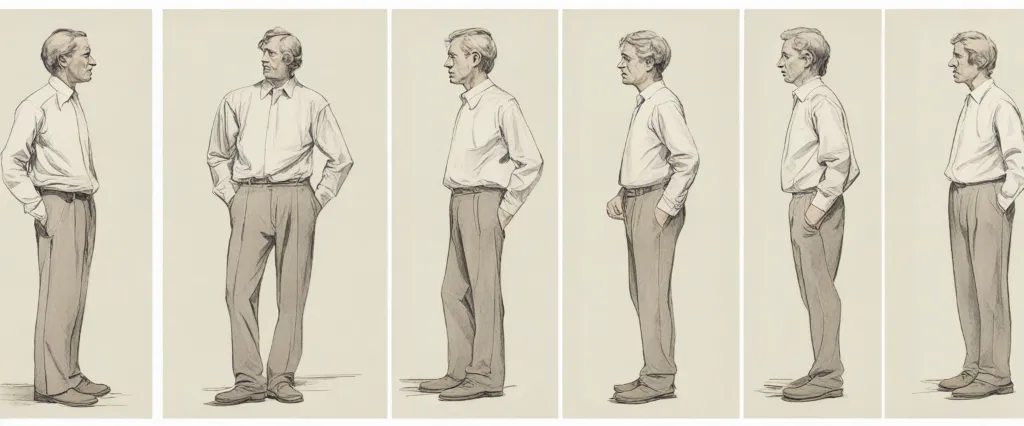
In “The Presentation of Self in Everyday Life,” renowned sociologist Erving Goffman explores the intricacies of social interaction and the role of individuals in constructing and maintaining their identities within society. Goffman’s insightful work examines how individuals shape their self-presentation by adopting various roles, managing impressions, and performing specific behaviors to influence others’ perceptions. By analyzing everyday encounters, Goffman sheds light on the complex dynamics that underlie our daily interactions. As a prominent figure in the field of sociology, Erving Goffman has made significant contributions to the study of social interaction and symbolic interactionism. With his compelling theories and keen observations, Goffman continues to influence sociological thought and our understanding of the intricate performances that shape our lives.
Chapter 1: Dramaturgy: Understanding Social Interaction as Theater
In Chapter 1 of “The Presentation of Self in Everyday Life” by Erving Goffman, titled “Dramaturgy: Understanding Social Interaction as Theater,” the author introduces the concept of social interactions as performances on a metaphorical stage. Goffman argues that individuals constantly engage in various forms of impression management to create and maintain specific impressions on others.
The chapter begins by highlighting that individuals are not just passive participants in social situations but active performers who carefully construct their self-presentation. Goffman compares everyday life to a theater, with individuals playing different roles and using props, costumes, and scripts to create their desired image. He emphasizes how people try to control the information they give out to the audience (the people they interact with), managing the impressions they want to create.
To analyze this theatrical performance of self-presentation, Goffman introduces the term “front stage” and “back stage.” The front stage represents the social setting where individuals present themselves to others, such as the workplace or a formal event. Here, people carefully maintain their desired image and perform according to societal expectations. The back stage is the private area where individuals can relax and drop their performance, revealing a more genuine self.
Goffman also introduces the concept of “teams” in these performances, emphasizing that individuals often cooperate with others to maintain the desired impressions. These teams support each other by using signals and cues to help individuals in their performances and to maintain consistency in the overall social interaction.
Overall, Chapter 1 provides an introduction to the concept of social interaction as theater, emphasizing the active role individuals play in creating and managing impressions. Goffman lays the groundwork for understanding the complex dynamics of everyday life, highlighting the importance of self-presentation and the strategies individuals employ to control how they are perceived by others.
Chapter 2: Front Stage and Back Stage: Managing Impressions
Chapter 2 of Erving Goffman’s book, “The Presentation of Self in Everyday Life,” titled “Front Stage and Back Stage: Managing Impressions,” explores the concept of impression management and how individuals strategically present themselves differently in different social situations.
Goffman introduces the idea that social interactions can be compared to a theatrical performance, where individuals enact specific roles while in the presence of others. He argues that individuals have two distinct areas where they manage their impressions: the front stage and the back stage.
The front stage represents the public realm, where individuals perform and present themselves to an audience. In this context, people carefully select their attire, behavior, and speech to create a favorable impression on others. They aim to convey a certain identity or social status that aligns with the expectations of the situation. Goffman emphasizes that individuals actively manipulate their behavior to make intended impressions and maintain a desired image.
On the other hand, the back stage represents the private realm, where individuals can relax and drop their performative facade. In this area, people can act more authentically, revealing personal thoughts, emotions, or behaviors that they would not display on the front stage. The back stage serves as a space to decompress, rehearse social performances, and strategize upcoming interactions.
Goffman argues that successful impression management relies on individuals effectively transitioning between the front stage and the back stage. They must carefully manage their personal expressions, ensuring that behaviors displayed on the front stage are consistent and plausible. Additionally, they must be able to maintain the boundary between the front and back stage, preventing any blurring that may jeopardize their desired self-presentation.
In summary, Chapter 2 of Goffman’s book examines the concept of impression management and the division between front stage and back stage. It underscores the dynamic nature of social interactions, where individuals strategically present themselves differently in various social settings. By understanding these concepts, individuals can gain insight into the performative nature of everyday life and the ways in which they craft and maintain their social identities.
Chapter 3: The Significance of Appearance: Clothing and Personal Style
In Chapter 3 of “The Presentation of Self in Everyday Life” by Erving Goffman, titled “The Significance of Appearance: Clothing and Personal Style,” the author explores the role of clothing and personal style in shaping our social interactions and self-presentation.
Goffman highlights that our choice of clothing and personal style is a form of expression that serves as an important tool in managing the impressions we give to others. He argues that our appearance functions as a visual cue for others to form judgments and assumptions about our identity, status, and personality. By carefully selecting our attire and style, we can intentionally create a desired image or project a specific social role.
The author suggests that our clothing choices are influenced by various factors, including cultural norms, social contexts, and personal preferences. Society often creates specific expectations for appropriate dress codes in different settings, such as formal attire for business meetings or casual wear for social gatherings. By conforming to these norms or deviating from them, individuals can manipulate the impressions they make on others.
Goffman also explores the concept of personal style, emphasizing that it is not solely about the clothes we wear but also encompasses our overall appearance, body language, and gestures. Our personal style can be used as a form of self-expression, reflecting our values, tastes, and individuality. It becomes a means to communicate and connect with others, as people often make assumptions and form initial judgments based on someone’s appearance.
Overall, Chapter 3 emphasizes the significance of appearance, clothing, and personal style in the construction of our social identities and the way we interact with the world around us.
Chapter 4: Props and Setting: Creating the Social Environment

Chapter 4 of Erving Goffman’s book, “The Presentation of Self in Everyday Life,” focuses on the concept of props and setting in creating the social environment. Goffman argues that individuals use props and manipulate the setting to enhance their presentation of self.
Props can be both physical objects and non-tangible elements. Physical props include clothes, makeup, and accessories that individuals adorn themselves with to convey a particular image. Non-tangible props refer to aspects like social status, education, and occupation. Goffman suggests that individuals carefully select these props based on the audience and situation they find themselves in, as it allows them to present different personas depending on the desired impression.
Setting, on the other hand, refers to the physical and social environment in which the interaction takes place. Goffman notes that individuals not only use props but also manipulate the setting to create a specific impression. For example, a wealthy person may invite others to their luxurious home as a way to showcase their affluence and social standing. Similarly, a professor may conduct a lecture in a lecture hall to establish their authority and expertise.
Goffman also introduces the concept of “front stage” and “backstage” behavior, which align with the setting. The front stage represents the public arena where individuals are conscious of the impression they are creating and are playing their respective roles. The backstage, however, refers to the private space where individuals relax and drop their performance. Goffman argues that it is essential to maintain a distinction between these two stages to preserve authenticity.
In conclusion, Chapter 4 of Goffman’s book explores the significance of props and setting in constructing the social environment. By carefully selecting and manipulating props, individuals can shape their desired image, while the setting provides the backdrop necessary for displaying these props. This chapter emphasizes the role these elements play in the presentation of self in everyday life.
Chapter 5: Performances and Roles: Acting in Different Social Situations
Chapter 5 of Erving Goffman’s book The Presentation of Self in Everyday Life explores the concept of performances and roles and how individuals act differently in various social situations. Goffman’s central thesis is that our daily interactions with others can be likened to performances on a stage, where we play different roles and use various techniques to manage the impression we make on others.
Goffman begins by discussing front stage and backstage behaviors. The front stage is where individuals perform in front of an audience, while the backstage represents the private area where people can relax and be themselves. Goffman emphasizes that individuals work hard to create a favorable impression on the front stage, employing techniques such as idealization, where they present themselves in the best possible light.
The author also examines the idea of teams and aligning performances. People often cooperate with others to provide a consistent and coordinated performance, ensuring that their roles align and create a cohesive impression. This can be observed in professional settings, such as hospitals, where doctors, nurses, and staff collaborate to maintain a specific performance for patients.
Furthermore, Goffman introduces the concept of impression management, which involves strategically influencing the perception that others have of us. Through various techniques, individuals control their appearances, mannerisms, and behaviors to create a desired impression. These techniques include personal front, where individuals work on their physical appearance, and expressive control, where individuals manage their emotions and expressions to appear appropriate for a given situation.
Overall, Goffman’s Chapter 5 explores how individuals navigate the complexities of social interactions by presenting different roles, managing impressions, and coordinating performances with others. By understanding the techniques used in everyday life, individuals can have greater control over the impressions they make on others and ensure a successful social performance.
Chapter 6: Face-to-Face Interactions: Nonverbal Communication and Gestures
Chapter 6 of Erving Goffman’s book “The Presentation of Self in Everyday Life” explores the significance of nonverbal communication and gestures in face-to-face interactions. Goffman argues that these nonverbal cues play a crucial role in how individuals present themselves to others and create impressions.
Goffman begins by highlighting the importance of nonverbal behavior in managing social situations. He suggests that individuals engage in an ongoing “performance” by employing various nonverbal cues such as facial expressions, body language, and gestures to convey specific messages and maintain a desired impression. These nonverbal behaviors can include direct acts like eye contact or indirectly through clothing choices or the arrangement of personal belongings.
One key concept discussed in this chapter is “tact.” Goffman explains that individuals use nonverbal cues to navigate potentially awkward or sensitive situations, protecting each other’s dignity. For example, a person may subtly withdraw or redirect their gaze when a conversation topic becomes uncomfortable. This gesture allows both parties to save face and avoid embarrassment.
Goffman also delves into the concept of “bearing.” He suggests that nonverbal cues such as posture, body language, and mannerisms can convey a person’s social status or role. Individuals use these cues to communicate their understanding of the social hierarchy and to project a particular image or status to others.
Overall, Chapter 6 of “The Presentation of Self in Everyday Life” emphasizes the intricate role of nonverbal communication and gestures in shaping social interactions. Through these nonverbal cues, individuals negotiate and manage impressions, tacitly navigate sensitive situations, and project their desired identities to others.
Chapter 7: Teams and Performances: Collaborative Presentations
Chapter 7 of “The Presentation of Self in Everyday Life” by Erving Goffman, titled “Teams and Performances: Collaborative Presentations,” explores the concept of teamwork in the context of social performances. Goffman analyzes how individuals work together to maintain and present a cohesive image of themselves to others.
Goffman introduces the idea of a “team” as a group of individuals who collaborate to create and sustain a shared front stage impression. He argues that successful teams rely on coordination, mutual awareness, and the ability to seamlessly merge individual performances into a collective front. These teams often consist of actors who take on specific roles and contribute to the overall impression.
The author emphasizes the importance of individuals’ understanding and acceptance of their respective roles within a team. By fulfilling their prescribed roles, team members work together to create the desired impression in front of the audience. Goffman coins the term “resting players” to describe those who contribute to the team indirectly, providing background support to the primary performers.
Additionally, Goffman highlights the role of leaders within teams. These leaders coordinate the efforts of team members, direct their actions, and ensure the maintenance of a unified performance. They play a crucial part in managing the continuity and coherence of the team’s front.
However, Goffman also acknowledges the potential pitfalls of teamwork. He discusses situations where individuals may deviate from their roles or unintentionally disrupt the collaborative performance. These disruptions can occur due to differences in individual evaluations, misunderstandings, or the inability to properly coordinate actions.
In conclusion, Chapter 7 delves into the concept of teamwork and collaboration in the presentation of self. Goffman highlights the importance of coordination, role understanding, and leadership in maintaining a successful, harmonious performance within a team.

Chapter 8: The Audience’s Role: Observing and Evaluating Performances
Chapter 8 of “The Presentation of Self in Everyday Life” by Erving Goffman explores the integral role of the audience in observing and evaluating performances. Goffman argues that our social interactions can be conceptualized as performances, with individuals playing specific roles and presenting themselves in certain ways to create desired impressions. However, these performances are constantly being evaluated by the audience, which influences how we adapt our behavior.
According to Goffman, the audience plays a crucial role in maintaining social order and upholding social norms. They act as judges of the performance, determining whether it aligns with their expectations and ideals. The audience’s evaluations shape the way individuals present themselves, as they seek approval and validation from others.
Goffman introduces the concept of “front-stage” and “back-stage” behavior to illustrate how individuals’ performances vary depending on their awareness of the audience. In front-stage behavior, individuals are conscious of being observed and adjust their actions accordingly to create a positive impression. On the other hand, in back-stage behavior, individuals have more freedom to be their authentic selves and let their guard down.
He further emphasizes that performance evaluations can result in both positive and negative consequences for individuals. Positive evaluations lead to increased status, acceptance, and social rewards, while negative evaluations can result in rejection, social judgment, and lower social status.
In conclusion, Chapter 8 highlights the importance of the audience’s role in observing and evaluating performances in shaping our behavior and guiding our interactions. The feedback and judgments we receive from others significantly influence how we present ourselves and navigate social situations.
After Reading
In conclusion, Erving Goffman’s book, The Presentation of Self in Everyday Life, provides a thought-provoking analysis of human social interactions and the construction of identity in everyday situations. Goffman’s dramaturgical approach highlights how individuals present different versions of themselves in various settings, using various techniques to manage impressions and maintain social roles. By examining the social masks people wear and the performative aspects of social interactions, Goffman unveils the intricacies of human behavior and the hidden dynamics that shape our social lives. Ultimately, this book serves as a valuable resource for understanding the complexities of social interactions and the interplay between individual identity and social expectations in our daily lives.
1. “Imagined Communities: Reflections on the Origin and Spread of Nationalism” by Benedict Anderson
– Benedict Anderson explores the concept of nationalism and how it has shaped modern societies. This thought-provoking book delves into the origins and dynamics of imagined communities, offering a unique perspective on the complex nature of nationhood.
2. “Class: A Guide Through the American Status System” by Paul Fussell
– Paul Fussell provides an insightful examination of social classes in America, dissecting various aspects such as fashion, language, and behavior. Fussell’s sharp observations and witty writing style make this book an engaging exploration of American class distinctions.
3. “Antisocial: Online Extremists, Techno-Utopians, and the Hijacking of the American Conversation” by Andrew Marantz
– After reading “The Presentation of Self in Everyday Life” by Erving Goffman, delve into Andrew Marantz’s “Antisocial,” which examines the dark side of online platforms and their impact on society. Marantz offers a deep dive into the world of internet extremism, online radicalization, and their powerful influence on public discourse.
4. The Better Angels of Our Nature: Why Violence Has Declined” by Steven Pinker
– Steven Pinker presents a thought-provoking argument for the decline of violence throughout human history. Drawing on extensive research and data, Pinker challenges prevailing assumptions about the nature of violence, offering a glimmer of hope for a more peaceful future.
5. “Evicted: Poverty and Profit in the American City” by Matthew Desmond
– Matthew Desmond explores the devastating effects of eviction on low-income communities in America. Through vivid storytelling and in-depth research, he brings to light the complex web of poverty, housing insecurity, and systemic issues that perpetuate this crisis. “Evicted” offers a powerful and compassionate perspective on the struggles faced by those living on the margins of society.



